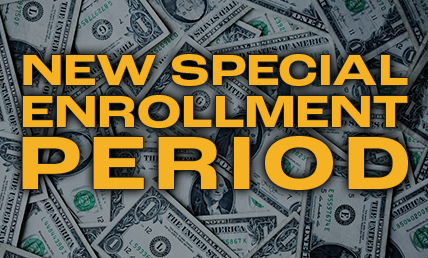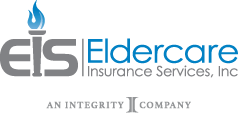
Key Points:
- If a person's income does not exceed 150% of the federal poverty level, they might be eligible for a Special Enrollment Period.
- This special enrollment period does not have limitations on how often it can be used, or the type of health plan that can be selected.
- Client has to be eligible for premium tax credits in order to take advantage of this SEP.
- When this article was published, February 9th, 2022, this SEP has not taken effect yet.
There is an SEP if your income does not exceed 150% of the federal poverty level. Under the new special enrollment period, eligible applicants can enroll in an ACA-compliant health plan through the marketplace year-round.
In September 2021, the U.S. Department of Health & Human Services finalized a new special enrollment period in states that use HealthCare.gov (optional for other states), granting year-round enrollment in ACA-compliant health insurance if an applicant’s household income does not exceed 150% of the federal poverty level (FPL) and if the applicant is eligible for a premium tax credit (subsidy) that will cover the cost of the benchmark plan.
What does this new special enrollment period allow eligible applicants to do?
Under the new special enrollment period, eligible applicants can enroll in an ACA-compliant health plan through the marketplace at any time during the year. Coverage will take effect the first of the following month, or an exchange can choose to have a deadline of the 15th of the month for coverage to start the first of the following month. (As of 2022, HealthCare.gov allows all SEP enrollments to have coverage effective the first of the following month, regardless of the application date.)
This special enrollment period does not have limitations on how often it can be used, or the type of health plan that can be selected. A person with an eligible household income who is already enrolled in an exchange plan can use this SEP to pick a different plan, although deductible and out-of-pocket spending would reset to $0 for the year when the new plan starts.
However, the new rules do clarify that if a current enrollee is adding a dependent to their plan, they can either add the dependent to the existing plan, or switch to a Silver level plan and enroll the new dependent in that plan. The SEP cannot be used to switch the current enrollee to a non-Silver plan together with the new dependent.
Who is eligible for this special enrollment period?
To be eligible for this SEP, an applicant’s household income cannot exceed 150% of the federal poverty level. For a single person enrolling in coverage for 2022 in the continental U.S., 150% of the poverty level amounts to an income of no more than $19,320. For a household of five, it’s $46,560. (Note that the prior year’s poverty level guidelines are used, and that the poverty levels are higher in Alaska and Hawaii).
You have to be eligible for premium tax credits in order to take advantage of this SEP. So regardless of income, the SEP is not available to a person who is eligible for Medicaid, premium-free Medicare Part A, or an employer-sponsored health plan that provides minimum value and is considered affordable.
This SEP is only available on-exchange, since premium tax credits aren’t available outside the exchange.
This special enrollment period may or may not be permanent
This special enrollment period is fairly unique in that it may or may not be permanent. HHS has clarified that the new SEP is only available for as long as people at this income level are eligible for premium-free benchmark plans. The American Rescue Plan (ARP) enhanced premium tax credits (subsidies) for 2021 and 2022. The result is that people with income up to 150% of the poverty level do not have to pay premiums for the benchmark plan. (In some states, these plans still cost a dollar or two, due to additional state-mandated benefits.)
Does the SEP for individuals with income under 150% FPL apply in every state?
Maybe not. State-run exchanges (there are 18 as of the 2022 plan year) are not required to offer this SEP. Some state-run exchanges may decide to allow this SEP as of 2022, and others may choose not to offer it at all.
Some state-run exchanges may find that it’s too operationally challenging to make this SEP available for 2022, and may postpone it until 2023 (assuming that the ARP’s subsidy enhancements are extended).
But HealthCare.gov is the exchange used in the majority of the states, and this SEP is available in all of those states for as long as the ARP-style subsidy enhancements are in effect.
State-run exchanges have flexibility in terms of how they implement this SEP. As noted above, some may choose not to offer this SEP at all. For those that do offer it, proof of income might be required in order to trigger the SEP, or they may follow the federal government’s lead and allow the SEP eligibility to be based on the income attested by the consumer.
What else do you need to know about eligibility for the SEP?
Although access to this SEP is largely based on income, there are several points to keep in mind:
- In most states, there is a fairly narrow income window for eligibility for this SEP, since Medicaid is available to adults in most of the country with income up to 138% of the poverty level. So this SEP would only be available to applicants with income between 139% and 150% of the poverty level (note that Medicaid enrollment, for both adults and children, is always available year-round).
- In the dozen states where Medicaid has not been expanded, this SEP is available to households with income between 100% and 150% of the poverty level. (There’s a coverage gap in those states for many adults with income below the poverty level, and this SEP does not change that.)
- Recent immigrants (who aren’t eligible for Medicaid due to their new immigrant status) can qualify for this SEP with income between 0% and 150% of the poverty level.
- People receiving unemployment compensation may be able to qualify for this SEP in 2022 and future years, if additional legislation is enacted. In 2021, income was determined to be 133% of the federal poverty level for people receiving unemployment compensation, regardless of how much it actually was. The Build Back Better Act calls for this to be extended through 2022, with income above 150% of FPL disregarded for people receiving unemployment compensation. This would continue to allow these applicants to be eligible for this SEP, as eligibility is based on having an income of no more than 150% of the poverty level.
How do you prove eligibility for this SEP?
To gain access to this SEP in the federally run marketplace (HealthCare.gov), the client just has to attest to the fact that their income is in the eligible range.
If the income information the government has on file doesn’t match the income the applicant has projected, the exchange may request proof of the projected income.
If an applicant does not provide proof, the federally run marketplace can terminate the premium tax credit that’s being paid on the enrollee’s behalf, meaning that the person would then be paying full-price for their coverage (or will simply find coverage terminated when they fail to pay the full premium in the first month it’s required).
Read full article here: https://www.healthinsurance.org/special-enrollment-guide/an-sep-if-your-income-doesnt-exceed-150-of-the-federal-poverty-level/
